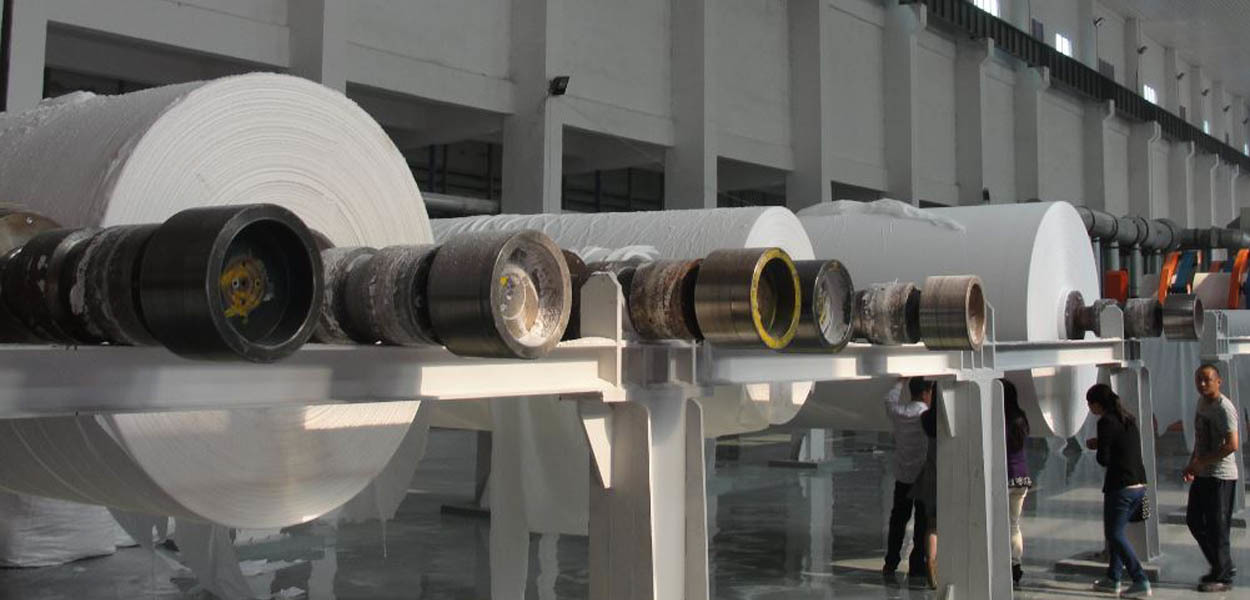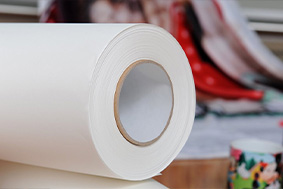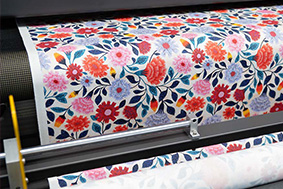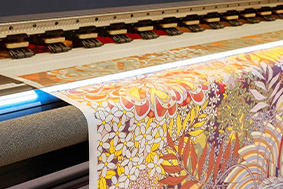The sublimation transfer paper market has been facing challenges. Ongoing supply chain bottlenecks and soaring energy costs have led to price hikes, squeezing the margins of printing service providers. Rising prices have also led to a decline in demand for key applications, especially in the fashion sector, due to reduced consumer spending. This conundrum has led to recession in many economies.
Based on data from WTiN's research on sales of sublimation transfer paper for textile applications, this article forecasts likely data trends by analyzing market dynamics, provides input from leading experts, and explores the shape of the market from a product perspective.
In the wake of the COVID-19 outbreak, a prominent trend in the sublimation transfer paper market has been the shift to lower grammage papers. Some believe that rising transportation costs have fueled this trend.
Paola Tiso, Sappi's head of dye-sublimation sales, says: "If you want to understand the difference between 60 g/m² and 30 g/m² paper, it's clear that going to a lighter weight paper allows the same roll of paper to be longer."
For some time now, print service providers have wanted to put more paper on a ream due to container shortages, among other things, which have led to delivery cycles reaching unprecedented lengths. This fact drove the demand for lower grammage paper. Similarly, fuel and logistics costs have pushed up inflation, further exacerbating the challenges faced by print service providers and paper producers.
Survey data shows that 28.6% of paper grammages are below 60 g/m². In contrast, papers with 60 to 90 g/m² account for 36.2% of the products, and papers with more than 90 g/m² account for 35.2% of the market. These percentages are based on the 120 products evaluated, which total 210 different grammages.
However, reviewing the sublimation paper consumption data for 2021, 26.45% of the paper consumed had a grammage of less than 60 g/m². In contrast, paper with a grammage between 61 and 90 g/m² accounted for 49.6% of the market, and paper with a grammage above 90 g/m² accounted for 23.9% of all sales.
These statistics indicate a disconnect between the demand of print service providers and the supply of paper producers as well as sellers. This is understandable as the market has been going through a turbulent period.
However, demand for soft signage applications continued to be sluggish throughout 2021 due to ongoing event cancellations and travel restrictions, resulting in a 10% decline in the consumption of paper with a grammage weight of more than 90 g/m². To be fair to paper producers, the events of the last three years have been difficult to predict and uncertainty will remain a central feature of business in 2023.
Growth in market share for papers below 60 g/m² is also a trend. Encouragingly, the percentage of low-gram paper available at the start of 2023 is higher than the category's consumption in 2021. This indicates increasing competition between different grammage categories of paper since the start of the pandemic.

However, producers and users should also be aware of the disadvantages of low-gravity paper. The most obvious of these is the risk of soggy breaks.
Hans Kiewiet, Managing Director of Felix Schoeller FSDM, says: "Regardless of which producer you talk to, the machine will not produce paper below 50 g/m². For most paper machines, the optimum value is probably around 70 g/m²."
"The idea that you can keep adding more ink to thinner paper is a misconception. You need a strong paper base and coating, so you can't continue to reduce paper grammage indefinitely and still think that performance will be maintained."
He continues, "I think the market has reached its limit in terms of the lower paper grammar limit. The same is true for the use of uncoated paper. Retailers like H&M insist on a certain quality. If you squeeze too much on the lower limit of grammage, you can't achieve that texture."
Dirk Hörnschemeyer, product manager for dye-sublimation and digital fine art papers at Felix Schoeller, added: "Focusing only on the problems faced by print service providers and going to lighter grammage papers can be problematic. If you have very thin paper, productivity is reduced and user error can become a real problem. Printers may have to duplicate work, which wastes valuable resources and affects profits."
When we focus on heat transfer paper, we find that its 2021 consumption share is just over 20%. However, when researching the number of products available on the market, once again the discrepancy emerged. Among the companies studied heat transfer papers accounted for only 15.8% of the overall product portfolio.
However, the future trend for heat transfer papers is strong. They are commonly used to print sportswear such as cycling shorts and swimwear, a high-growth application for digital textile printers. The onus is now on paper producers to expand the range of heat transfer papers produced.
Heat transfer papers offer some very good results, especially from an ink load perspective. This is especially true for sportswear, which has fabrics with excellent elasticity.
The widespread use of heat transfer papers in the sportswear market also offers unexpected advantages. Sportswear is a mature industry that is still growing and is more stable during economic downturns. Hobbies rarely change with the economy, but fashion and interior textile sales certainly do. We've seen the demand for fashion wane due to hyperinflation, but if you're a runner, you probably still run. This means that, eventually, runners will need to buy more sportswear.
 Choose sublimation paper? Focus on quality over price
Choose sublimation paper? Focus on quality over price
 7 Factors To Consider Before Choosing A Digital Textile Printer
7 Factors To Consider Before Choosing A Digital Textile Printer
 2024 Apparel Decoration Industry Trends
2024 Apparel Decoration Industry Trends
 What are the features of digital textile printing equipment
What are the features of digital textile printing equipment